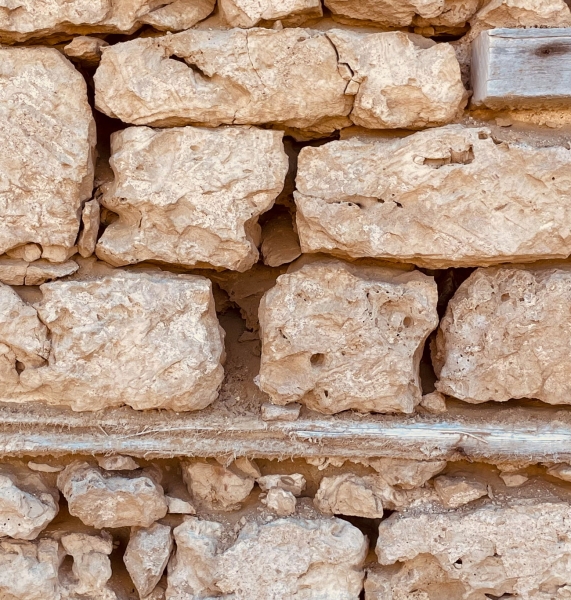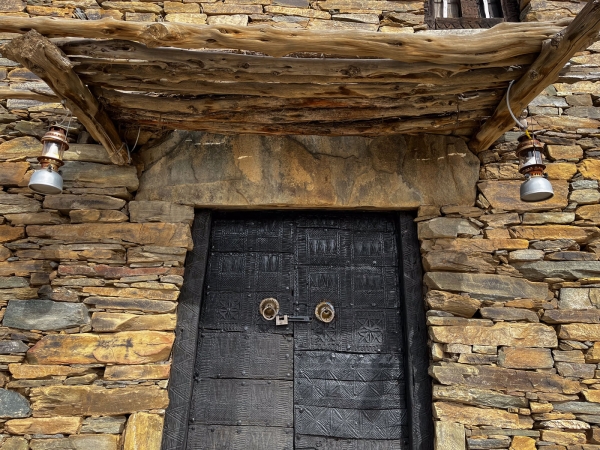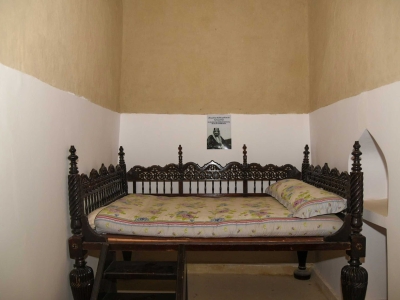


Stone construction
Stone construction is common in coastal areas, such as limestone known as al-Mangabi stone "Corals" in Jeddah and mountain areas along the Sarawat Mountains range. Types of stones include unshaped rubble stone, extracted from the sea for constructing walls or barriers, and shaped stone, manually smoothed using simple tools.
Clay brick construction
Clay bricks are produced in the western region, where they are shaped on the ground and left to dry before being fired in kilns for long periods to achieve the required hardness. Once ready, the bricks are transported to construction sites and used for building walls, upper floors, and roofing enclosures.
Adobe construction
Adobe is used in constructing walls in areas where stone is scarce. It is made by mixing soil with water and adding straw. Walls are constructed by stacking adobe bricks on a foundation, using mud as an adhesive mortar.
Mud course construction
This method is used for constructing walls, forts, towers, and multi-story houses, as it allows for building sturdy and tall walls. Soil and straw are mixed with water and trampled thoroughly by oxen, then left to ferment for four days. The builder receives clay blocks from a worker called al-Mulaqif and arranges them one by one to form a complete course along the wall. The course is left to dry for two days before the process is repeated for the next course. A person known as "al-Mumalles" smooths and refines the sides of the course using a wooden tool called al-Mubayinah.
Light material construction
Palm fronds, tree branches, and reeds are used to construct simple residential buildings in agricultural areas, such as al- Areesh, which has a square or rectangular layout. The trunks of Tamarix are used to support the structure, fixed into the ground at equal intervals (four feet apart). Al-Eshah (coming from the nest) is common in Jazan Province and is constructed from reeds and tree branches tied together with palm fiber ropes. It has a circular shape with a conical roof. Walls are coated from the inside with a layer of mud, painted with lime, and decorated with patterns and plates.
Related quizzes
Related articles

